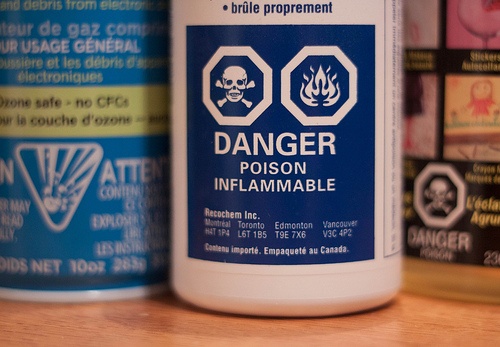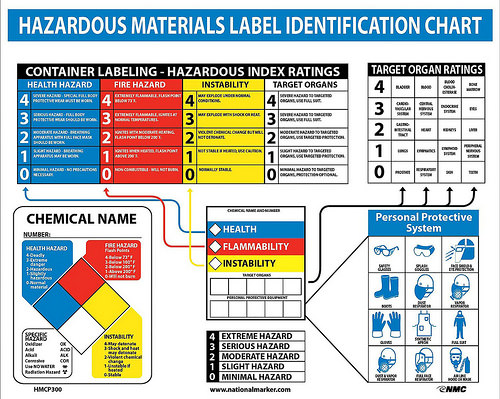This post continues my discussion of the “Frank R. Lautenberg Chemical Safety for the 21st Century Act,” which was adopted in June to revise the 1976 Toxic Substances Control Act (TSCA). In prior posts I summarized changes made to accelerate testing of chemical substances that are already in use in the U.S., and to enhance premanufacture evaluation of new chemicals and significant new uses of existing chemicals. The set of major changes created by the 2016 Amendments addresses TSCA’s preemptive impact – the degree to which EPA actions or inactions under TSCA can restrict states' authority to enact their own regulatory and informational programs. This note addresses preemption.
Read MoreAudit, Compliance and Risk Blog
The New TSCA 3 – Adjusting Preemption of State and Local Chemical Regulation
Posted by Jon Elliott on Tue, Aug 23, 2016
Tags: Environmental risks, Environmental, EPA, Hazcom
Think Drinking Water Issues Only Exist in Places like Brazil?
Posted by Jane Dunne on Thu, Aug 18, 2016
We often see pictures in the media of places where the environment is being abused. During the Rio Olympics, we’ve seen many visual images of garbage-laden rivers and dirty beaches and it’s easy to think that if that were in our country, it would be under control, but a recent Harvard study took a closer look at water quality at home and found that it comes up short in many U.S. states.
Read MoreTags: Health & Safety, Environmental risks, Environmental, EHS, Canadian
This post continues my discussion of the “Frank R. Lautenberg Chemical Safety for the 21st Century Act,” which was adopted in June to revise the 1976 Toxic Substances Control Act (TSCA). In the last post I summarized changes made to accelerate testing of chemical substances that are already in use in the U.S., and for which evidence developed since their introduction suggests they may pose an “unreasonable risk” to health or the environment. This “grandfathering” of never-evaluated and potentially hazardous chemicals has been seen as a major weakness. The 2016 Amendments also strengthen the process of evaluation for new chemicals offered for distribution in the U.S. This note addresses changes to these new chemical reviews.
Read MoreTags: Environmental risks, Environmental, EHS, EPA, Hazcom
On June 22, President Obama signed the “Frank R. Lautenberg Chemical Safety for the 21st Century Act,” which revises the 1976 Toxic Substances Control Act (TSCA) extensively. TSCA was enacted 40 years ago to empower the Environmental Protection Agency (EPA) to acquire and evaluate data regarding the effects of chemical substances and mixtures on human health and the environment, and to prevent unduly hazardous chemicals from entering commercial use. Although TSCA was a huge step forward at the time, its limitations became ever clearer in subsequent years, and compounded to leave important gaps in protective regulation of chemicals. (I summarized basic provisions here). The late Senator Lautenberg spent many years trying to thread the political needle between chemical companies and health and environmental advocates. He died without achieving this goal, but is honored by the new legislation – which I refer to from now on as “the 2016 Amendments.” (I summarized an earlier version of this new legislation here)
Read MoreTags: Environmental risks, Environmental, EPA, Hazcom
Late in the 1970s, measurements in the stratosphere revealed that levels of ozone were falling – the headline summary of this trend was the annual appearance of a thinned-out “ozone hole” over the Arctic and Antarctic regions. Health and environmental and human health scientists worried because stratospheric ozone is an important absorber of potentially damaging ultraviolet radiation (bad for penguins under the ozone hole, and eventually bad for humans on the rest of the planet). Further studies concluded that the culprits were halocarbon chemicals used as refrigerants, solvents, propellants, and foam-blowing agents. Dubbed “ozone depleting substances (ODSs)”, these chemicals (including chlorofluorocarbons (CFCs), halogenated chlorofluorocarbons (HCFCs), freons and halons) are relatively non-reactive when released on the surface, so they persist in the atmosphere long enough to drift up to the stratosphere where incoming solar radiation eventually powers their reaction with ozone.
Read MoreTags: Environmental risks, Environmental, EHS, Hazcom, climate change
SEC Tries Again To Increase Resource Extraction Issuers’ Reporting
Posted by Jon Elliott on Tue, Jul 26, 2016
The Securities and Exchange Commission (SEC) has recently republished requirements for publicly listed “resource extraction issuers” to report payments they make to the U.S. federal government or foreign governments, related to commercial development of oil, natural gas, or minerals. These requirements fulfill one of many duties assigned SEC by the 2010 Dodd-Frank Act, this one codified in a new Section 13(q) of the Securities and Exchange Act of 1934 (1934 Act).
Read MoreTags: SEC, Environmental, Oil & Gas, directors, directors & officers
Constructive Dismissal Claims Due to Employer Conduct
Posted by STP Editorial Team on Thu, Jul 21, 2016
Managers who abuse employees and employers who tolerate such abuse may be subject to law suits and face significant financial penalties if their actions are found to constitute constructive dismissal.
Read MoreTags: Employer Best Practices, Employee Rights, Canadian, directors, directors & officers
Director Who Decided Not To Be Involved In Business, Still Liable For Employees’ Unpaid Wages
Posted by Ron Davis on Tue, Jul 19, 2016
Mensa Williams was listed as a director in the incorporation documents for Ambrosia Elite Corp., a company run by his brother, Admin. Ambrosia was incorporated in 2007, but did not actively conduct its retail clothing business until 2008. Ambrosia became insolvent in 2014, leaving its employees with unpaid wage claims. The unpaid wage claims were pursued under Ontario’s Employment Standards Act, 2000 (ESA), and when those claims were unsatisfied, an order to pay was issued to Ambrosia’s directors including Mensa Williams.
Read MoreTags: Business & Legal, Employer Best Practices, Employee Rights, directors, directors & officers
Director’s Liability Insurance Does Not Cover Personal Guarantee Given By Director
Posted by Ron Davis on Thu, Jul 14, 2016
In Great American Insurance Co. v. Ramsoondar (2016 ABQB 73), the Alberta Court of Queen’s Bench was asked to declare that a director and officer liability insurance policy did not cover the losses claimed against Fredy v. Ramsoondar pursuant to a personal guarantee he granted to Faunus Group Inc. (FGI), a client of United Protection Services Inc. (UPSI). UPSI was a wholly owned subsidiary of United Protection Services Group Inc. (UPSG), and UPSG obtained a director and officer liability policy from Great American Insurance Co., and listed Ramsoondar as its chief financial officer on the policy.
Read MoreTags: Insurance, Insurance Claims, Canadian, directors, directors & officers
On May 17, the Environmental Protection Agency (EPA) issued a proposed order registering the pesticide sulfoxaflor, using authority under the Federal Insecticide, Fungicide and Rodenticide Act (FIFRA). This proposal is the latest action in a long-running and controversial review of that potential pesticide, and continues to consider how toxic this active ingredient is to bees, and therefore how and if it can be used. Coming after a recent court decision vacating EPA’s previous attempt to register sulfoxaflor, the answer is not clear (I provided a basic discussion of FIFRA registration here).
Read MoreTags: Environmental risks, Environmental, EHS, EPA, Hazcom










